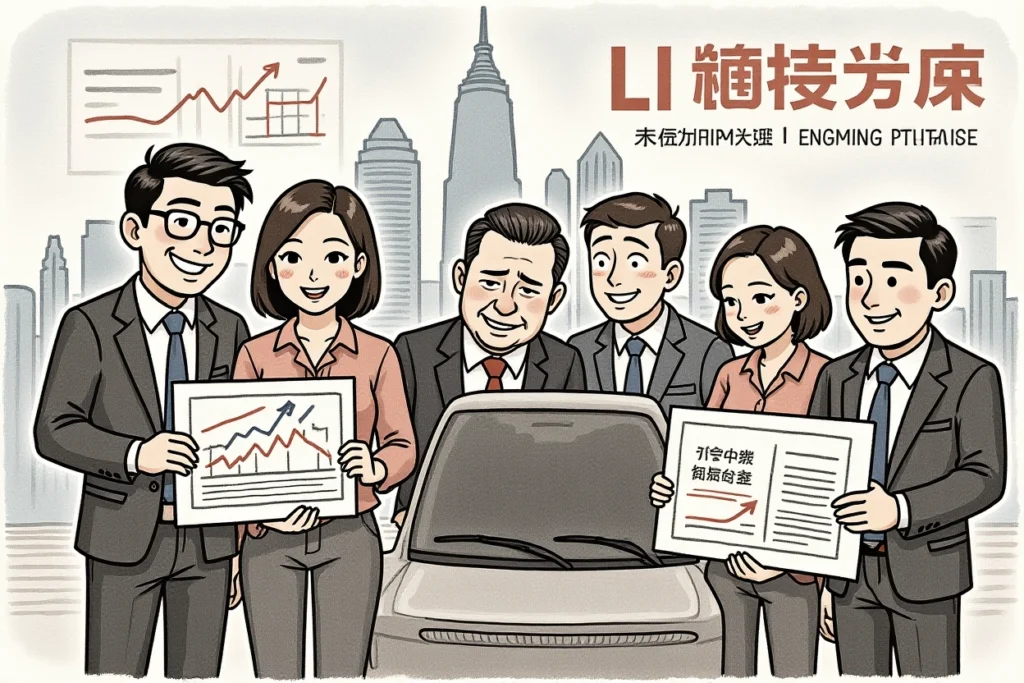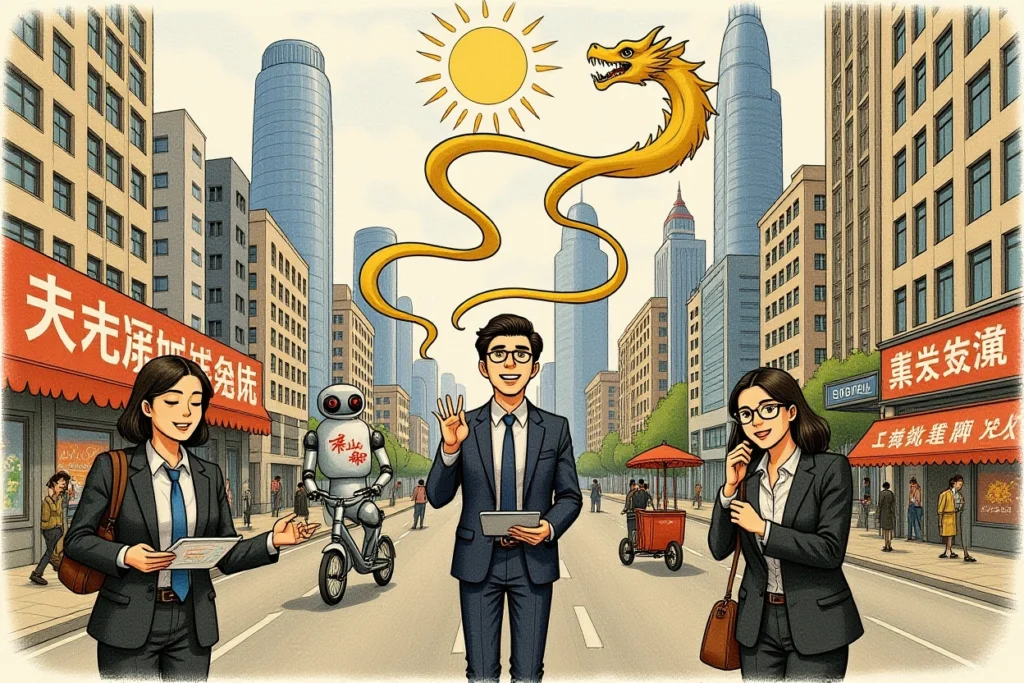Chery’s Strategic Entry into Iraq
Chinese automaker Chery has officially launched its Omoda and Jaecoo brands in Iraq, introducing five new models to capitalize on one of the Middle East’s fastest-growing automotive markets. This expansion comes as Chinese manufacturers aggressively target emerging economies to offset fierce competition at home. With Iraq’s new car sales surging 28% annually to approximately 161,000 units, Chery positions itself alongside established players like Changan and Geely in this oil-rich nation.
The newly available models include the Omoda C5 and C7 alongside Jaecoo’s J5, J7, and J8—with only the J7 featuring plug-in hybrid technology while others remain gasoline-powered. This carefully curated lineup addresses diverse consumer preferences while testing electrification readiness in Iraq’s developing infrastructure. As Chinese automakers’ global expansion accelerates, Iraq represents a strategic beachhead for Chery’s international ambitions.
Model Specifications and Market Positioning
Chery’s Iraq launch features distinct positioning for each brand:
– Omoda C5: Compact SUV targeting urban drivers
– Omoda C7: Midsize crossover with premium features
– Jaecoo J5: Entry-level rugged SUV
– Jaecoo J7: Flagship plug-in hybrid (PHEV)
– Jaecoo J8: Full-size off-road capability
The sole electrified model—Jaecoo J7 PHEV—signals Chery’s gradual approach to green mobility in markets where charging infrastructure remains limited. Industry analysts note this mirrors Chinese automakers’ global expansion playbook of balancing conventional and new-energy vehicles based on regional readiness.
Chinese Automakers’ Iraq Footprint
Iraq’s automotive landscape has transformed into a Chinese stronghold, with Chery joining Changan, SAIC’s MG, Geely, Great Wall Motors, and its own Jetour subsidiary in the market. This collective presence underscores how Chinese brands now dominate emerging economies through competitive pricing and tailored product offerings. Their combined market share exceeds 40% of Iraq’s new vehicle sales according to industry reports.
Established Players and Market Dynamics
Existing Chinese competitors have paved the way through localized strategies:
– Changan: Leverages extensive dealer network across 15 cities
– SAIC MG: Focuses on budget sedans with 5-year warranties
– Geely: Targets commercial fleet operators with durable pickups
– Great Wall: Specializes in off-road SUVs for rugged terrain
– Jetour (Chery): Offers value-packed crossovers since 2021 entry
These brands demonstrate Chinese automakers’ global expansion expertise in adapting to diverse markets. Their success has been fueled by Iraq’s post-conflict economic recovery and rising middle-class demand for affordable personal transportation.
Driving Forces Behind Global Expansion
China’s automotive market—the world’s largest—has become a battleground with over 94 active brands competing for shrinking margins. Domestic sales growth plateaued at 2.1% in 2023 while production capacity utilization fell below 60%, creating intense pressure for internationalization. This environment propels Chinese automakers’ global expansion into strategic markets like Iraq where competition remains less saturated.
Domestic Market Challenges
Key factors pushing manufacturers overseas include:
– Price wars slashing profit margins by 15-30% across segments
– Overcapacity estimated at 10 million unused production units annually
– EV subsidy reductions diminishing domestic demand incentives
– Local protectionism in Chinese provinces favoring hometown brands
With Iraq offering 28% growth versus China’s stagnant figures, market diversification becomes essential for survival. Chinese automakers’ global expansion focuses on regions with similar characteristics: developing infrastructure, rising disposable incomes, and limited local manufacturing.
Iraq’s Automotive Renaissance
Iraq’s vehicle market is experiencing unprecedented growth, with 2023 sales reaching 161,000 units—a 28% year-on-year increase according to the Iraqi Automobile and Motorcycle Importers Association. This surge stems from multiple economic factors converging:
– Oil revenue funding infrastructure development projects
– Banking reforms enabling accessible auto financing
– Post-ISIS stability rebuilding consumer confidence
– Urbanization driving personal mobility demand
The passenger vehicle segment dominates with 74% market share, particularly favoring SUVs that account for 58% of sales—a preference perfectly aligned with Chery’s Omoda and Jaecoo offerings.
Market Opportunities and Challenges
While potential remains substantial, operational hurdles persist:
– Import tariffs ranging from 5-30% depending on engine size
– Limited formal financing options (only 35% purchases financed)
– Sparse dealership coverage outside major cities
– Fuel subsidies keeping gasoline prices artificially low
Chinese automakers navigate these challenges through local partnerships—Chery collaborates with Baghdad-based Al-Mansour Automotive for distribution—and flexible payment plans. Their price advantage of 15-25% below Japanese and Korean competitors proves decisive in cost-conscious markets.
Strategic Implications for Chery
Chery’s Iraqi launch extends beyond immediate sales into long-term positioning. The company targets 15% market share within three years through phased investments in brand awareness and service infrastructure. Initial priorities include establishing 12 dealerships nationwide and training 150 local technicians by 2025.
Electrification Roadmap
The Jaecoo J7 plug-in hybrid serves as a strategic test case for electrification readiness. Iraq currently lacks public charging infrastructure, but government proposals suggest installing 500 stations by 2026. Chery’s measured approach—one electrified model among five launches—demonstrates Chinese automakers’ global expansion pragmatism in balancing innovation with market realities.
Future plans may include:
1. Local assembly partnerships to avoid import duties
2. Solar-compatible charging solutions for off-grid regions
3. Hydrogen-compatible prototypes for Gulf Cooperation Council markets
4. Ride-hailing fleet partnerships to accelerate adoption
Broader Industry Shifts
Chinese automakers’ global expansion represents a fundamental realignment of the automotive industry. Their collective overseas sales grew 56% year-on-year in 2023, with emerging markets contributing 72% of this growth. This strategic pivot addresses domestic constraints while establishing China as an automotive export powerhouse challenging traditional manufacturers.
The Iraqi case study reveals key success factors for emerging market entry:
– Segment-specific product adaptation (rugged SUVs for rough terrain)
– Value-chain localization through regional partnerships
– Gradual electrification aligned with infrastructure development
– Multi-brand strategies targeting different consumer tiers
As Chinese automakers’ global expansion accelerates, their combined market share in developing economies could reach 65% by 2030 according to BloombergNEF projections. This redefines competitive dynamics worldwide.
Future Outlook and Next Steps
Chery’s Iraqi venture exemplifies how Chinese manufacturers transform global automotive hierarchies through strategic market selection and adaptable product strategies. Their success hinges on sustaining quality perceptions while navigating geopolitical complexities—particularly U.S. sanctions affecting Iraq’s banking sector.
Industry observers should monitor three critical developments:
– Electrification infrastructure progress across Middle East
– Local production initiatives to avoid import barriers
– Brand-building investments beyond price leadership
For consumers, this expansion brings greater choice and advanced features at accessible price points. For automakers, it offers a blueprint for entering high-potential emerging markets. As Chinese brands consolidate their presence, the ripple effects will reshape global automotive manufacturing and distribution for decades.
Track Chery’s progress through Iraq’s quarterly automotive reports and consider how similar strategies might unfold across Africa and Southeast Asia. The new era of automotive globalization has clearly begun.




